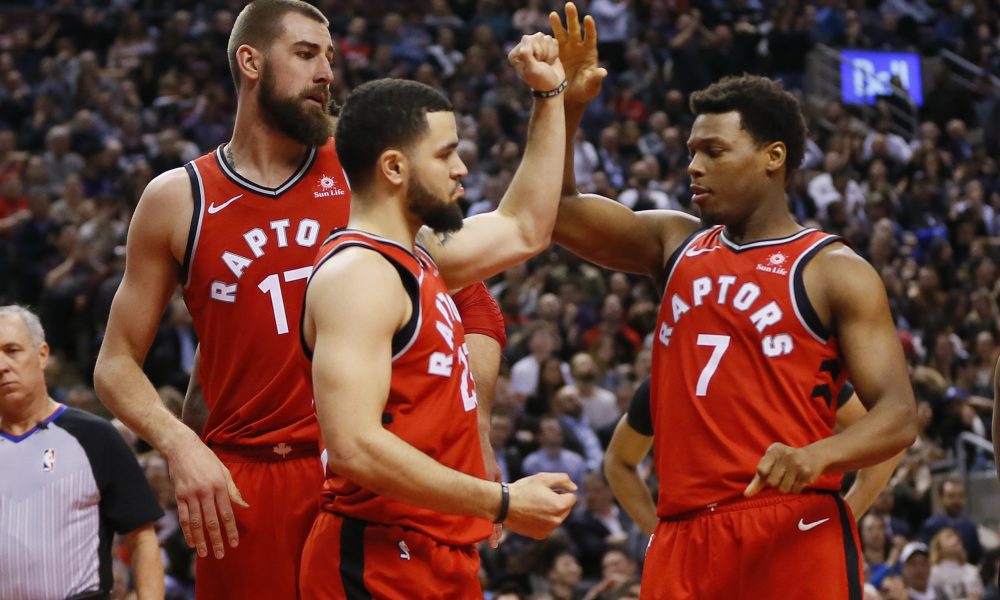Raptors Playbook: SLOB Horns Down
Over at the Raptors Playbook YouTube channel (@RaptorsPlaybook on Twitter), I am breaking down the X’s & O’s of the Toronto Raptors. This week, we’ll focus on their Horns Down Sideline out of Bounds (SLOB) play – a play involving a flex action that leverages their star player’s strength. Watch the video embedded below alongside the summary written, and remember to follow and subscribe to never miss out on a video.
Option 1: Back screen, Cross Screen & Flex Cut – Starting at 0:04
The play starts with the inbounder passing the ball to the 5 after they set a back screen for a guard. The 5, situated at the elbow will then swing the ball to the weak side elbow. While this is taking place, the inbounder will cut towards the baseline and use a cross screen.
The purpose of this action is to provide the decision maker with the best possible passing angle to hit the flex cut if their defender trails behind them without being bumped over the top of the screen by the second defender. In such cases, a quick layup will present itself. If not, the player with the ball at the elbow has the freedom to isolate/take a jumper or continue into the play’s next progression.
Option 2: Down Screen – Starting at 0:35
The player who previously received a back screen and set a cross screen will now be involved in one final scripted screening action as they utilize a down screen to come towards the perimeter. Kyle Lowry is the optimal player to fill this role as he is a tremendous screener for a guard (utilized when setting the cross screen for the flex cutter) and then can pop to the perimeter where he is a lethal shooter (utilized when using the down screen).
The entirety of this action (setting a cross screen before using a down screen) is out of the Flex Offense.
From this point, the offense has to take whatever advantage has been generated throughout the play. If the guard is free along the perimeter because their defender is hung up on the down screen, they should take the 3-pointer. If their defender successfully trails them, they should drive to the paint with their defender on their hip. At this point, a 2-on-1 is created in a similar manner to a pick and roll, so all the regular reads are available here as well.
Counter: Reject Cross Screen – Starting at 1:52
For defenders that are well prepared and anticipate this play, the inbounder also has the freedom to abort the use of the cross screen and choose to use the down screen instead. Overeager defenders can be prone to head fakes, and assuming that the cross screen is an inevitability can work against them as a player of Lowry’s calibre flashes to the perimeter for an open jumper.




